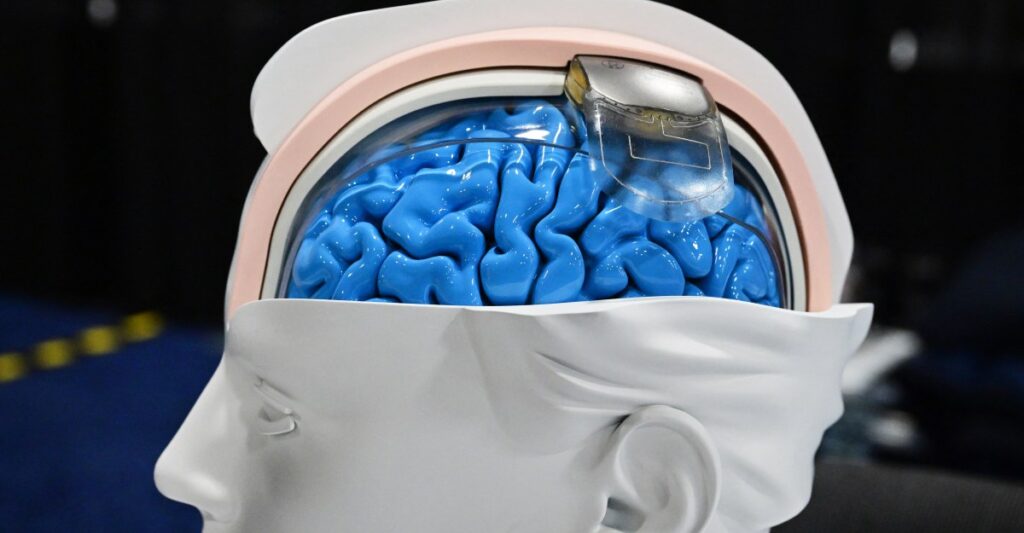When you listen to the word “neurotechnology”, you can imagine Black mirror Headphones that open the last private place we have, our own skulls, or the cyber-samurai or William Gibson’s Neurománcer. That fear is natural, but it can blind us to the real potential that is being carried out in Neurotch to address the long and intact medical challenges found in our brains. In the last 18 months, Brain Tech has cleaned three obstacles at the same time: smarter algorithms, shrinking and, more important, proof that people can feel the difference in their bodies and their moods.
A brain pacemaker
Keith Krehbiel has fought against Parkinson’s disease for almost a quarter of a century. By 2020, as Nature recently reported, the tremors were winning, until the neurosurgeons slid the Medtronic Perception device on their head. Unlike deep brain stimulators older than the control regions of the carpet pump movement in the brain with stable current, perception lists first. Hunt the “explosions” of the beta wave in the brain that mark the Bengal of a Parkinson and then trigger millisecond by millisecond, an adaptive approach that mimics the way in which a cardiac pacemaker is placed an arithmic heart.
In the adapt-PD study, patients like Krehbiel moved more softly, touch less pills and prefer the adaptive mode to regular. The regulators on both sides of the Atlantic agreed: the system now is authorized by us and the EU.
Because the electrodes spare only when the symptoms do, the total use of energy is reduced, the battery life and delaying the following skull opening surgery. Better yet, because each perception sent since 2020 already has the detection chip, adaptive fashion can be activated with a simple firmware impulse, the way it would update its iPhone.
The scientists applied the same listening logic, then, below in the spinal cord this year. In Nature Medicine Pilot, Pittsburgh researchers placed two thin electrode strips on the sensory roots of the lumbar spine in three adults with spinal muscular atrophy. Soft “real” motor neurons “
Half a world of distance, the surgeons from the University of Nankai threw a “stent electrode” of 50 microns through the jugular vein of a patient, fueled it against the motor cortex and combined it with a sleeve that moved the muscles of the arm. Without craniotomy, without UCI, only a rapid catheter procedure that allows a survivor of a stroke lifted the objects and move a cursor. High -tech rehabilitation is moving towards outpatient care.
Mental health care on your couch
The brain is not just cables and muscles; The mood also lives there. In March, the food and medication administration labeled a headset similar to a neuro pulvinar viewer as an innovative device for major depressive disorder. The dripping unit alternating and directly currents, while an algorithm on board reads brain rhythms on the march, and doctors can adjust the recipe on the cloud. Technology sacrifices a ray of hope for patients whose depression has resisted conventional treatments as drugs.
Thought cursors and synthetic voices
Cochlear implants for people with hearing loss once they sounded as science fiction; Today more than 1 million people listen through them. That scale test has emboldened a new wave of cerebral computer interfaces, even Elon Musk’s Startup Neuralink. The company’s first user, Quadriapegic Noland Arbaugh, told Wired last year that he now “constantly performs multiple tasks” with a thought -controlled cursor, collecting part of the independence lost by an injury in the 2016 spinal concrete. Neuralink is not as advanced as a musk They separate from the brain, but the promise is there.
In the speech front, the new systems are decoding the neuronal signals in text on the screen of a computer, or an equal synthesized voice. In 2023, Stanford researchers and the University of California San Francisco installed brain implants in two women who lost the ability to speak and managed to reach days of decoding 62 and 78 words per minute, much faster than previous brain technology interfaces. That is still much slower than the 160 words per minute of natural speech in English, but more recently the advances are approaching that rate.
Gray matter railings
Yes, Neurotech has a shadow. The brain signals could reveal a person’s mood, maybe even a vote preference. The new law of Europe now treats the “neuro -biometric categorization” -technologies that can classify people by biometric information, including brain data such as high risk, demanding transport and exclusion options, while the US brain. UU. Strength algorithms.
And remember the other risk: do nothing. Duration of a proven therapy because it feels futuristic is a bit like rejecting antibiotics in 1925 because a medicine that came from the mill seemed strange.
The twentieth century medicine dominated the chemistry of the body; 21st century medicine is learning to tune the electric symphony inside the skull. When it works, Neurotech acts less like a hammer than like a fork, pushing each section to the tone and then appears so that music can reproduce.
Royal patients are walking further, speaking faster and, in some cases, they simply feel like them again. The challenge now is to keep our fears proportional to the risks, and our imagination wide enough to see the profits that are already in hand.
A version of this story originally appeared in the Good News Bulletin. Register here!


